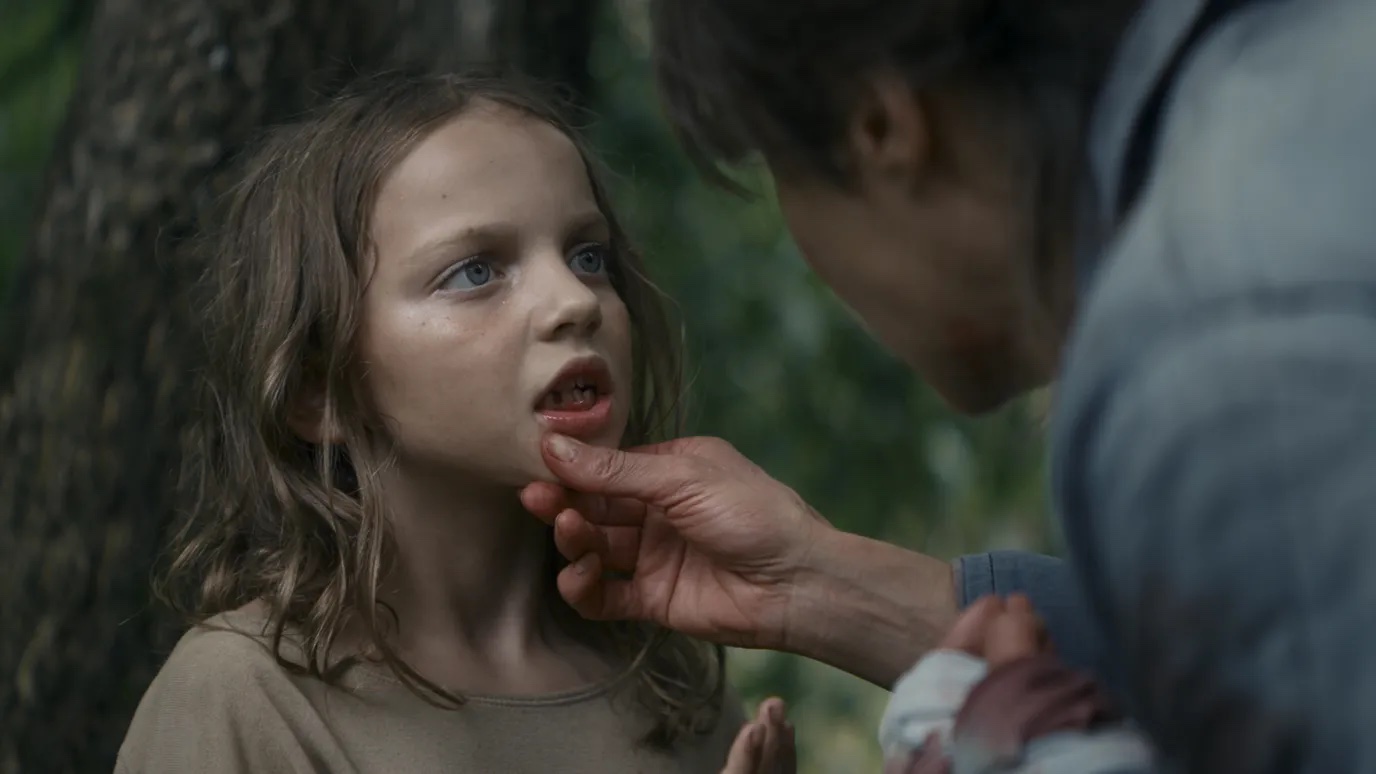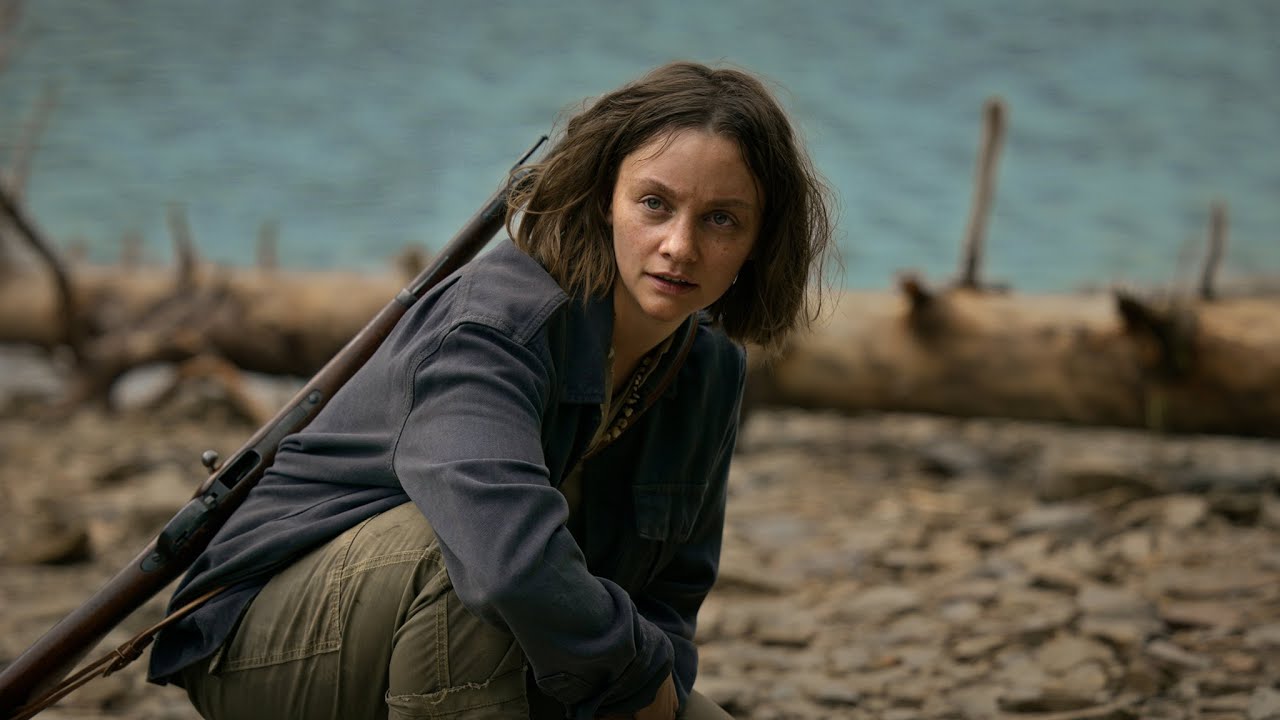interview
Skalde (Mathilde Bundschuh) lives in a secluded rural community led by Pesolt (Ulrich Matthes) far away from a world that may no longer exist. She is a respected inhabitant of the village, even though she’s born to an outsider mother, Edith (Susanne Wolff), and marked by a social stigma she can’t easily erase. One day, she encounters a mysterious girl (Viola Hinz) in the woods. Against the rules and beliefs of the community, she decides to befriend her and shelter her.
This is the premise of Sophia Bösch’s debut feature Milk Teeth, based on the novel of the same name and one of the most interesting titles screened at this year’s International Film Festival Rotterdam. During the days of the Dutch gathering, we reached out to Bösch to chat about the making of this intriguing picture and how she was able to subvert the conventions of the post-apocalyptic and mystery genres.

Projektor: How did you come up with the idea of adapting Helene Bukowski’s novel for the big screen?
Sophia Bösch: That wasn’t my idea, actually. My producer [Milena Klemke], who had seen my graduation short, bought the rights of the novel. She read the book, and she thought of me. I was intrigued right away. It was this very dark yet very modern fairy tale, centered on these three female characters. I found this constellation very interesting. Besides, the characters themselves were very fascinating. When I read it for the first time, I felt as if there was a film already in front of my eyes, because it was so cinematic in the way it was written.
You shared writing duties with Roman Gielke. How did you split your tasks, and what kind of obstacles did you face along the way?
It’s been a constant challenge. The difficult thing about making movies based on books is that you need to take away things; you need to strip them down because a book has much more space and time to unfold than a film has. And this is also an epic novel that encompasses a whole generation, with parts focusing on the mother’s childhood and youth, and [others set at the time] when the main character [Skalde] was a child.
We had to strip away a lot while trying to keep the core of the story and ask ourselves questions like “Where are you in this story?” You’ve got to tell the story as a filmmaker, you’ve got to find your voice. Knowing that this adaptation carries another person’s voice, I have to ask “How does this translate into mine?”
“Knowing that this adaptation carries another person’s voice, I have to ask ‘How does this translate into mine?’”
My co-author is quite experienced when it comes to scriptwriting. As a director, I’m not a great writer in principle, so he had all the expertise and knowledge of the craft, and we split our work quite equally. The nice thing about our collaboration was that there was no ego [prevailing] and no fights, as we were just looking together for the right words, scenes, and dialogue.
How did you cast the actresses playing Skalde and the child?
It’s been a very long process for both [roles], especially for the child because she had to be very special. Sometimes, children who have been acting in movies or advertising all have this kind of sweetness, or they know how to behave and how to look like. Here, I really needed a child that didn’t have all that, that was still raw. When I saw Viola’s casting reel and the improvisation that she made, I knew right away it was her.
The same happened with Mathilde. When I saw her reel, I immediately thought she was my Skalde. But Mathilde was busy with another shoot so we couldn’t meet for a long time. I couldn’t know for sure until I saw her in person, and sure enough, when we met, I knew she was the one.

How did you work with your actors? Did you improvise and rehearse a lot? Or did you follow other approaches?
Working with the actors is at the heart of my filmmaking. It’s what I’m most interested in and what I love the most. We’ve been working already before filming, we spoke and rehearsed a lot. The three female leads had to get used to each other, so we had to build trust between them. That’s why we had several meetings.
I know quite clearly what I want, but I still love it when the actors bring their own input because they can have such beautiful ideas that I would have never thought of. They have expertise and know things about their characters that I might not know. For example, in the scene where we see one of the old women singing for her wife while she’s sitting under the tree, that was [the actress’] idea. I didn’t even know the song, and the actress said, “I think she’d sing for her here.” Then she sang it and that was beautiful. We had to clear the rights for the song afterward. Luckily, it was a very old tune.
How did you work on location scouting?
That has been another challenge. This was a very special world, it had to look as if there was no civilization around, and very isolated. It’s not so easy to find this kind of place in Germany, because it’s so densely populated. We’ve been looking for one for quite a while and in the end, it was actually filmed in four different parts of the country. So the forest, the river, the houses, they are all very far from each other. The river was particularly hard to find because it had to be a broad one, and not too busy. Usually, you can find some of them in Eastern or Northern Europe, but not in Central Europe. Finally, we found some nice spots in Eastern and Northern Germany that suited us well.
Curated by humans, not algorithms.
© 2024 A Good Movie to Watch. Altona Studio, LLC, all rights reserved.